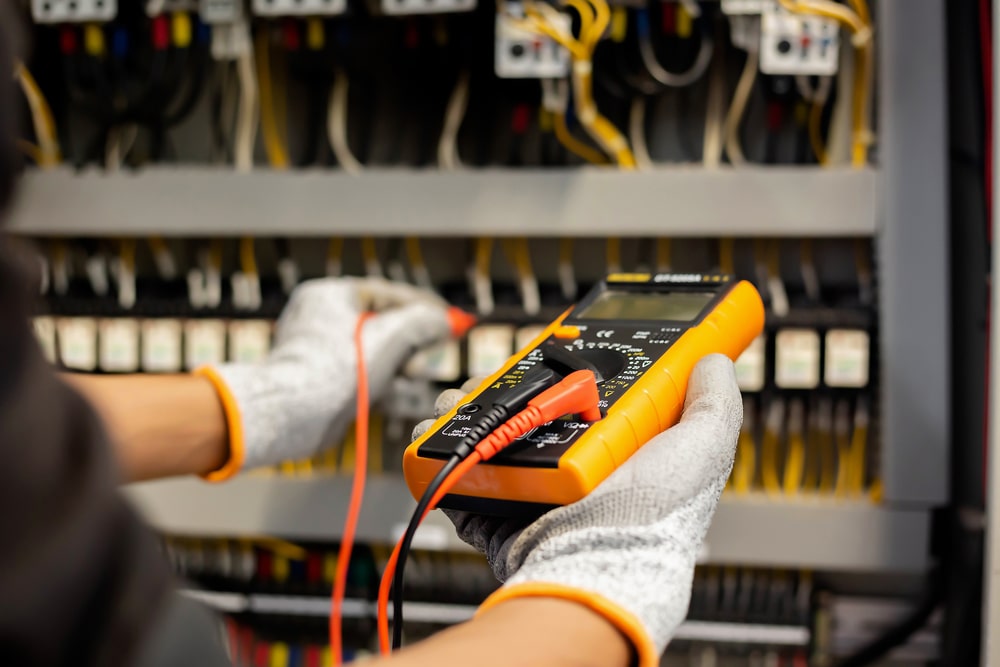We have been providing electrical services to Dallas, Irving, Arlington, Round Rock, and several other cities in Texas. In fact, we have become the go-to Dallas electrician and we want to keep it that way. Here, you’ll learn the different types of electrical wiring that is available. It will help you choose your choice easily.
At the moment, there are four types of wiring and they are:
- Cleat wiring
- Batten wiring
- Casing and capping
- Conduit wiring
Cleat Electrical Wiring:
This wiring method involves the use of cleats. The insulated conductors are supported on wooden cleats. During installation, the cleats and the wires are positioned in groves in the base plate and it is covered with a cap. The wires are held in cleats at 6mm above the ceiling or walls. It is necessary to add that cleats are made of wood.
This type of wiring is hardly used for homes because it is best suited for temporary settings like a construction site. It is not advisable for permanent use. That’s why it is hardly ever used for residential buildings. Of course, it’s a perfect wiring style for industrial sites.
Pros of Cleat Wiring:
- It is easy to install.
- It is very cheap.
- The wiring is preferable for temporary usage.
Cons of Cleat Wiring:
- It is not visually appealing. The fitting will ruin your interior décor.
- Since the wires are not covered, they are exposed to environmental effects. This may shorten the lifespan of your wires.
Batten Electrical Wiring:
This wiring method involves tying wires together with an iron clip and placing them on top of a wooden strip called batten. This is a very old wiring method but it’s hardly used in Texas now.
Pros of Batten Wiring
- This is another easy wiring set up.
- It is also very cheap.
- It is more visually appealing than cleat wiring.
- You can easily spot a damaged wire for repair or replacement.
Cons of Batten Wiring
- The cables may sag after a long period.
- You’ll need more wires, and that amounts to a relatively higher cost.
- Heavy wires cannot be used in this setting. That means you may not be able to use heavy-duty appliances in homes that have batten wiring.
- The wires will be exposed to environmental effects because they are not covered.
- You can’t use this method of wiring in the open.
Casing and Capping Wiring:
This method of wiring involves placing wires inside a wooden or plastic casing and placing them above the walls. It is so easy that you don’t have to be an Arlington electrician to implement this method. Since they are covered from the top, the wires look good and are more secure.
Pros of Casing and Capping
- Since the wires are well-covered, there’s no risk of electric shock.
- You can easily change any of the wires.
- This wiring system lasts long. And that’s why it can be used permanently.
- It is relatively cheaper to install.
- Repair work is quite easy with this method.
Con of Casing and Capping
- Fire can easily consume the entire set of wires.
Conduit Wiring:
There are two types of conduit wiring. They are surface mounting and concealed conduit wiring. In conduit wiring method, insulated wires are run through conduits and installed either in the walls and ceiling or on the surface of the walls. When they are installed in the walls, it is known as concealed conduit wiring. And when the installed wires are installed on the surface of the walls, it is called surface mounting.
Concealed wiring is the most popular type of electrical wiring because the wires are hidden in the walls and ceiling. This makes your building very beautiful because the sight of wires usually mars interior décors. Conduits are available in several lengths. One major problem with conduit wiring is the difficulty in spotting and replacing a damaged wire.
Pros of Conduit Wiring
- Conduits are durable and will extend the lifespan of your wires.
- This is the best wiring method for residential and commercial buildings.
- It reduces mechanical damage, fire hazards, and electric shocks.
- Conduits protect wires from being damaged by rodents.
- Since wires are hidden, your interior décor will remain unaffected.
Cons of Conduit Wiring
- It is costlier than other wiring methods.
- Conduit wiring is also more difficult and more time-consuming.
- Only experienced Dallas electricians can do the installation.
- If a cable gets damaged, it will be very difficult to spot the cable and replace it. However, at Blessed Electric, we use technology-driven tools that makes the job a lot easier for us.
Conclusion:

When you hire us, we’ll weigh the pros against the cons and suggest the most cost-effective wiring methods for your buildings. Although the concealed conduit wiring system is the most difficult and time consuming, we have the equipment to deliver the job in a timely fashion and we’ll charge you moderately. That’s why our list of customers keeps growing geometrically.
Do you want to inspect, replace, or upgrade your wiring? Contact Blessed Electric and Air for professional advice and free quotes.


